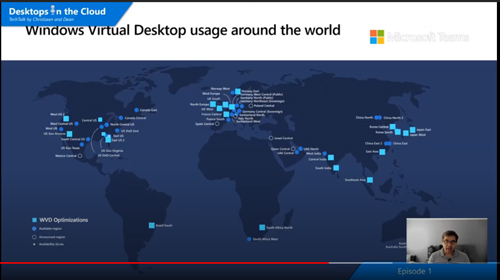News
Microsoft Making Progress on Windows Virtual Desktop
- By Kurt Mackie
- September 14, 2020
A recent "Desktops in the Cloud" podcast chat with Microsoft's Kam VedBrat gives some insight into Microsoft's progress on its Windows Virtual Desktop (WVD) service.
WVD is Microsoft's virtual desktop infrastructure (VDI) service that lets organizations remotely access Windows 7 or Windows 10 desktops and applications. The client operating system and apps get housed in Microsoft datacenters in a virtual machine (VM), and Microsoft manages all of the platform-as-a-service (PaaS) aspects for the customer.
VedBrat was asked about the differences between WVD and VDI, as well as differences with Microsoft's Remote Desktop Services (RDS) virtual desktop approach. He offered a lengthy reply. First, he defined WVD, saying that "Windows Virtual Desktop is a service on Azure that enables you to deploy cloud-based VDI environments to enable remote work for your organization."
Next, he contrasted WVD with RDS:
The neat thing about WVD, when you compare it to a traditional RDS deployment, is that a lot of the core infrastructure of connecting to your virtual desktops and configuring your virtual desktop environment, all of that infrastructure is taken care of for you. So if you think about an on-prem deployment, you'd have deploy an RDS server role, you'd have maybe an RDP gateway, you'd have a connection broker -- you'd have all of these separate roles you'd have to stand up and deploy and manage independently one after the other.
Microsoft takes care of those details with its WVD service, he added:
And so what we've been working to do is really replace a lot of that with a PaaS service [where] you bring your VMs, your policies, your users, your apps -- you focus on what's specific to your deployment. And the work of keeping the PaaS service up and running -- managing the broker, securing the connections back to the host pool gateway -- all of that is handled by WVD.
WVD Progress
VedBrat explained that when Microsoft announced the general availability launch of the Windows Virtual Desktop service last year, it was possible for organizations to use virtual machines with the WVD service in any region. Microsoft has since expanded its zones for optimizing the WVD service, he explained, showing the following chart:
 [Click on image for larger view.] Worldwide use of the Windows Virtual Desktop (WVD) service, showing WVD optimizations (solid squares), available regions (solid circles), announced regions (dashed circles) and Availability Zones (solid circles). (Source: Sept. 11 Microsoft "Desktops in the Cloud" podcast)
[Click on image for larger view.] Worldwide use of the Windows Virtual Desktop (WVD) service, showing WVD optimizations (solid squares), available regions (solid circles), announced regions (dashed circles) and Availability Zones (solid circles). (Source: Sept. 11 Microsoft "Desktops in the Cloud" podcast)
In general, there's been a lot of interest in WVD in Germany, VedBrat noted. Microsoft has since advanced the WVD service with a recent preview for U.S. government users, he added.
Microsoft has been working to make it easier for organizations to deploy WVD. It initially required deployment using a command-line interface, but recently added the ability to create and manage a WVD environment using the Azure Portal with its spring WVD release. VedBrat contended that with the WVD QuickStart tool, it's possible for organizations to get up and running quickly.
QuickStart is a free tool that uses the Azure DevOps service for WVD deployments, although the tool is deemed as being "unsupported" by Microsoft, per this August Microsoft blog description. QuickStart is said to automate WVD deployments "with a click of a button."
Microsoft also did work to improve latency and performance when using the Microsoft Teams videoconferencing service with the WVD service. The video encoding and decoding of audio and video now happens between the client endpoints. It avoids the latency issues associated with having to process those actions in the VM. With that approach, CPU use with Teams and the WVD service dropped from approximately 12 percent to 1.5 percent.
These Azure Portal and "A/V Redirect" improvements for the WVD service had been described by Microsoft back in July.
Much more was said. The talk is publicly accessible via the "Desktops in the Cloud" podcast link. This series is hosted by Christiaan Brinkhoff, a senior tech specialist for Windows Virtual Desktop at Microsoft, and Dean Cefola, a Microsoft FastTrack global lead for Windows Virtual Desktop.
About the Author
Kurt Mackie is senior news producer for 1105 Media's Converge360 group.